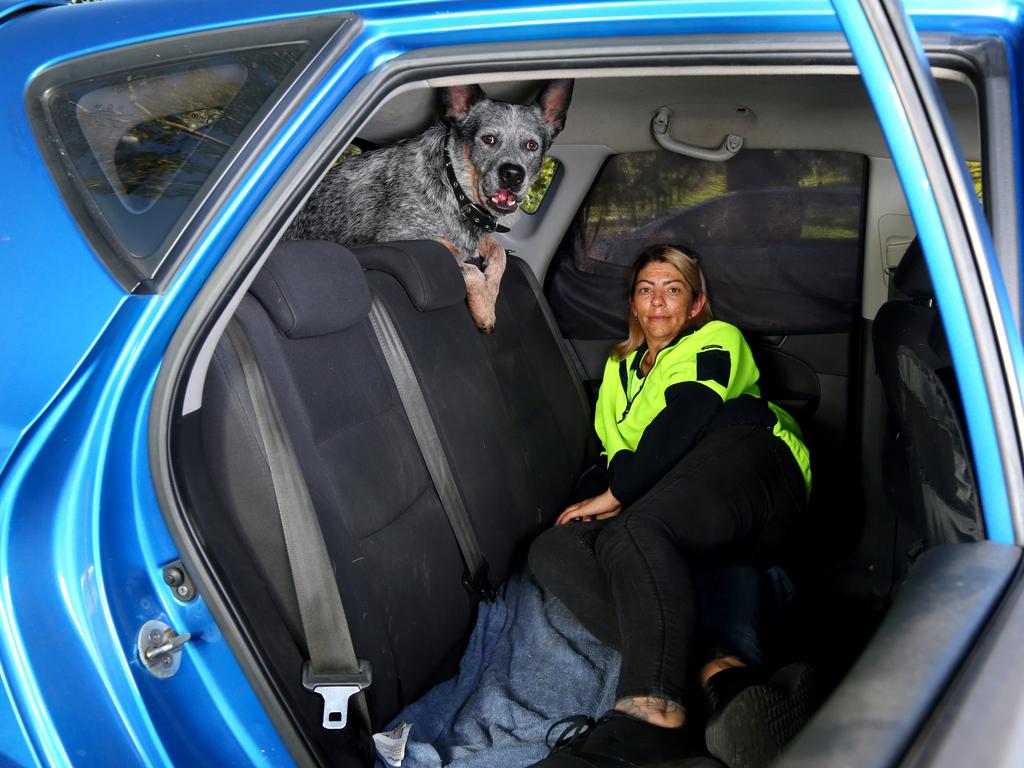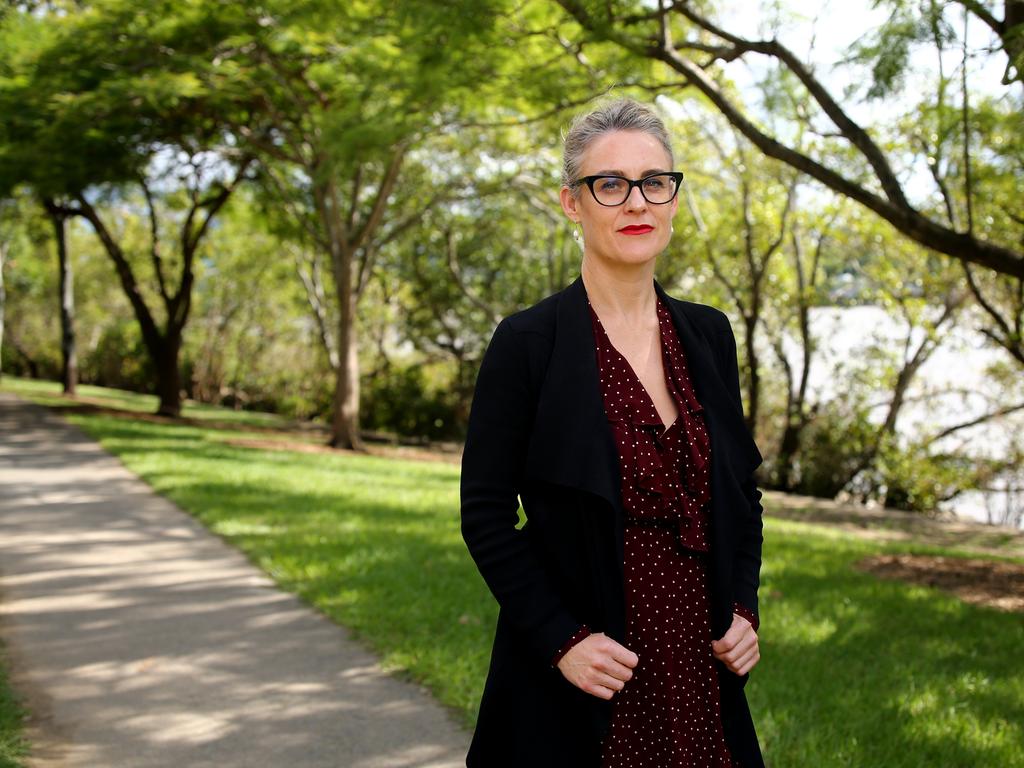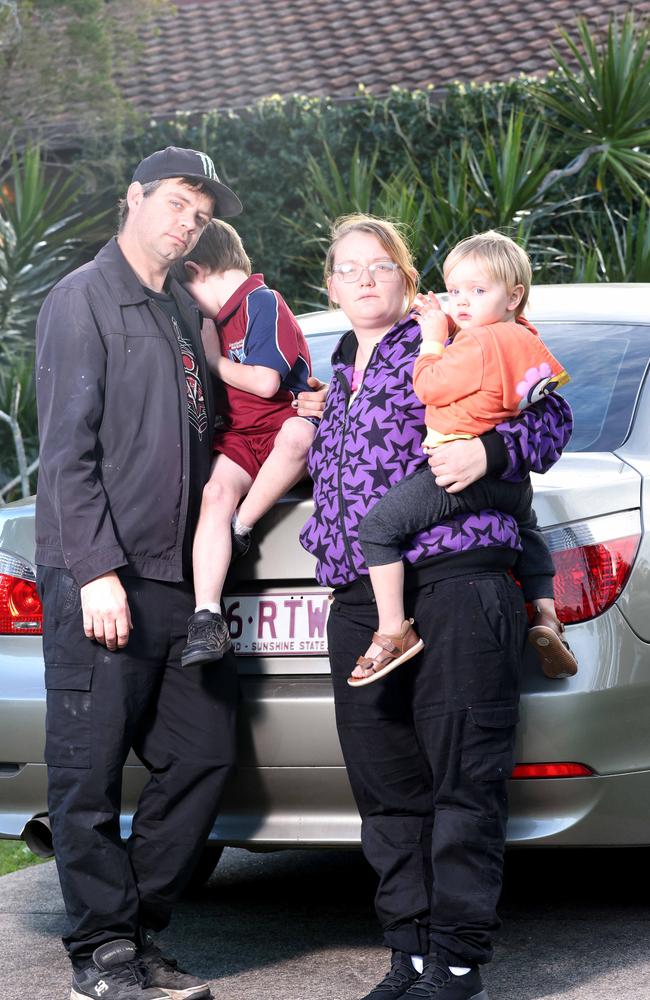50K Queenslanders in crisis as rental market shrinks
Queensland is in the grips of its worst rental crisis on record with just 0.7 per cent vacancy rates forcing families to live in their cars as experts say there is no sign of reprieve in sight and things may yet get worse.
QLD News
Don't miss out on the headlines from QLD News. Followed categories will be added to My News.
Record-low vacancy rates, blown-out housing waitlists and an unrelenting property price boom have deepened Queensland’s rental crisis with families still scrambling for shelter.
Jess Pomerenke secured a rental after speaking to The Courier-Mail in July last year but lost it months later when her work hours were reduced due Covid-19’s impact on Queensland industries.
She has returned to sleeping in her car with her dogs and is once again scouring South East Queensland for a one-bedroom unit to call home.

Ms Pomerenke said people had to grow desperate before they put their pride aside to publicly ask for help, and she was devastated to be back at square one.
“The rental crisis is beyond being let down and beyond any of the community centres being able to help,” Ms Pomerenke said.
“It comes down to there just not being enough houses out there.”
Ms Pomerenke has been placed on a waitlist for social housing and has been told she could be waiting years.
Queensland Council of Social Service CEO Aimee McVeigh said the current housing crisis was unlike anything the state had seen before, with more than 50,000 people on the list.
“We’ve got a population almost the size of Gympie (53,726 people in 2021) on our social housing register and numbers have grown by 80 per cent in the last five years. Absolutely this is a crisis for the likes of what we have not seen before,” she said.

The wait time for access to social housing across the state is now two years on average, with some people waiting up to four years in higher demand areas like the Gold Coast.
“That is absolutely not normal. Wait times have grown significantly over the last five years and almost doubled since 2017,” she said.
But with state population figures growing by approximately 42 per cent over the past two decades, Ms McVeigh said there’s yet to be a matching investment in property.
“At the lowest end of the spectrum there’s been barely any growth in social housing stocks while at the same time there‘s been a 42 per cent increase in population,” she said.
“And obviously the most disadvantaged people in our community hurt the most.”
Mum-of-two Linda Williams has grown increasingly panicked as her search for a suitable rental on the Gold Coast has been to no avail.
Her family-of-four are facing their worst nightmare- being separated- with people suggesting they could place her nine-year-old son Harrison in a care facility at night.
Harrison suffers from a rare form of muscular dystrophy, requiring 24/7 hour care and wheelchair-accessible accommodation.
“We’re fearful because we can’t find anywhere to live,” Ms Williams said.
“I don’t just mean locally, I mean in Australia. The rental crisis is greater than just the Gold Coast.”

Harrison’s disability means he has formed relationships with healthcare providers and school staff in the northern Gold Coast, and the prospect of relocating for a suitable house is daunting for the whole family.
“And we're wondering how we’re going to cope or how we’re going to have a roof over our heads, how are we going to afford food and fuel and be okay,” Ms Williams said.
Greater Brisbane’s vacancy rate hit 0.7 per cent in 2022’s March quarter, which means it’s now the lowest it’s been in over a decade.
Most of the vacancy rates in regions across the state have continued to plummet, with all but one sitting below 1.5 per cent or less.
The market is completely “unhealthy” for everyone involved, according to Real Estate Institute of Queensland CEO Antonia Mercorella, who said a healthy market sits between 2.6 per cent and 3.5 per cent vacancy.
“I don’t think any rational person would describe this as a healthy market. We have to keep in mind, this is shelter for people at the end of the day. It brings security,” she said.
But the worst might be yet to come, according to Ms Mercorella who said vacancy rates could reduce even further as an influx of international travellers enter the state and supply wanes following rising building costs.
“At the risk of being pessimistic, I should really hope I’m wrong, but it could well be that we find out it worsens,” she said.
“It really is a perfect storm at the moment unfortunately. And it really is hard to see where it all ends.”
Ty Montgomery said he feels terrible that his young family has no other option than to squat in the Morayfield house they had been renting from a good landlord for four years.
His partner and two children, under five, were given two months from late March to find a new home after they were advised their landlord was selling.

Mr Montgomery, who works part time and cares for his wife full time, said he made more than 100 applications for rentals from Hervey Bay to Ipswich, to no avail.
They cleaned and packed up their Morayfield home by late May with no where to go.
“We’re not meant to be there,” Mr Montgomery said.
“It’s horrible, heartbreaking and we feel so sorry for our owners.
“We’re worried about our rental history but we never missed a payment before.”
Mr Montgomery said all his family needed was stability.
He was desperately seeking accommodation in the Morayfield area where his children went to school and his wife received medical treatment for a range of disabilities.
“Having two children to look after, this is scary,” he said.
“We’re concerned for our children's education as well.”
In the 2020-21 year, there were more than 205,000 forms of housing assistance provided to Queensland households or individuals, including emergency housing, social housing, private market assistance and homelessness services.
A spokesman from the Department of Communities, Housing and Digital Economy said the Queensland Government was committed to increasing its stock of social and affordable housing.
The Department in June last year launched a four-year plan for the next stage of the Queensland Housing Strategy aimed at boosting housing supply and increasing housing and homelessness supports.
“This is the largest concentrated investment in social housing in Queensland’s history and will see the commencement of 10,000 new homes over the life of the Housing Strategy,” the spokesman said.
He said the construction of 6,365 new social homes would begin by June 30, 2025.
The spokesman said the department was continuing to assist more Queenslanders with other forms of housing assistance as well, including bond loans and rental grants.
“There can be a range of reasons people have difficulty renting in the private market, including limited rental history, lack of knowledge or understanding of how the rental market works and a lack of required documents, including references,” he said.
“Our frontline Housing Service Centres deliver RentConnect services which support people seeking to access or maintain a home in the private rental market.
People requiring housing assistance are encouraged to contact their nearest Housing Service Centre, our staff will explore with the customer their housing and support options and tailor accommodation assistance to meet their housing needs.”



